The age of the internet has made it easy for businesses to reach a wider range of potential customers by engaging with them online. However, to be visible, especially to those who can access your physical store, you need to optimize your local SEO.
In simple terms, as a business that uses the e-commerce strategy to deal with customers, you have to ensure that your efforts pay by using the right approach that not only gets your products or services in front of the right customers but also ensures that you make sales. Optimizing your local SEO is a recommended strategy for achieving this goal.
What is Local SEO

In order to effectively optimize your local SEO, you have to first understand how different it is from general SEO. From a general perspective, SEO (search engine optimization) is a set of practices that enhance the appearance and positioning of your web pages on the results page of search engines, such as Google and Bing. Search engines have crawlers that look for web pages to display on the search engine results page (SERP) when someone is looking for certain information on the internet.
Local SEO is similar, with the only difference being that it positions your business to appear in better spots in local search rankings. Hubspot explains that 46% of all Google searches look for local information. A more relatable example includes searches like “plumbers near me” or “seafood restaurants in Nairobi”, as demonstrated in the image below:
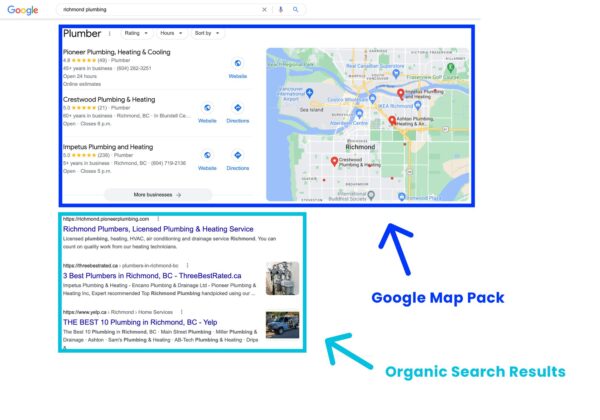
What search engines like Google do, in such a case, is present a list of the three top local businesses that are the best match for the user’s search query. This is normally referred to as local SEO 3-pack. The three best matches for the search query appear at the top of the search results page. Search engines make these determinations using information from your Google My Business (GMB). As a business, your goal should be to appear among these three best matches, which is achievable if you integrate the right strategies into your online business strategy.
Local SEO is also slightly different from e-commerce SEO. The difference is that e-commerce businesses do not have to be local, with eBay and Amazon presenting the best examples to illustrate this point. Hence, its SEO to improve rankings and visibility may include slightly different strategies.
Why it is Important to Optimize Your Local SEO
Online stores have existed for quite some time now. However, it exploded during the COVID-19 pandemic, forcing both businesses and consumers to rely heavily on ordering goods and services online more than visiting physical stores. One thing that remains the same pre and post-pandemic is that part of SEO optimization, especially for local businesses, still targets increased visibility and the driving of foot traffic to the physical store. Regardless, you first want to increase your online visibility before you can think about making sales, whether online or physically.

By now, you already have an idea as to why local SEO is important for your business. Nonetheless, a more specific reason concerns how optimizing your local SEO makes your business appear among the top searches on the search engine results page. Why does ranking at the top of SERPs matter you may ask?
According to data from Backlinko, web pages that appear on the first spot of SERPs get 27.6% click-through rates (CTR), which is 10 times more likely to get a click from users than that on the 10th spot. The CTR decreases as the position of a web page on SERPs increases.
Semrush provides additional data, showing that organic search is the top traffic source for all websites, while only 1% of users get to the second page of the search engine results. Therefore, you want to optimize your local SEO for your business because your aim should be to appear among the top three web pages that search engines show to searchers.
When you optimize your local SEO, more people will find you, visit your physical or online store, and make a purchase, which are the primary objectives for anyone who takes their business online. You will have a remarkable return on investment as a result.
Local SEO Ranking Factors You Must Consider
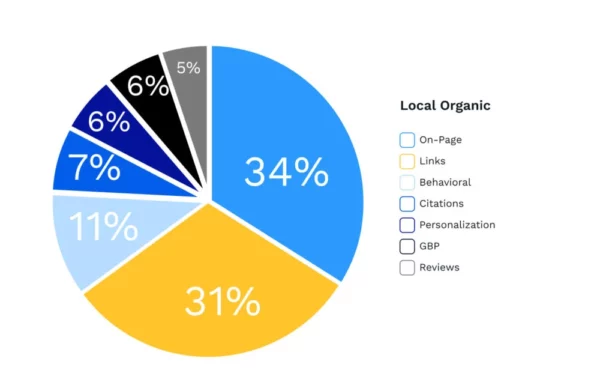
Search engines consider various factors when looking for web pages to display on the search engine results page. A more comprehensive summary includes:
- Prominence: how reputable or well-known your business is.
- Proximity: how close your business is to the searcher.
- Relevance: the relationship between what you are selling and what the searcher is looking for.
10 Important Tips to Optimize Local SEO for Your Business
Below is a description of strategies you can integrate into your online business to optimize its local SEO and boost your return on investment. The list may not be exhaustive, but it includes the most critical strategies that SEO experts agree on.
- Create and Optimize Your Google Business Profile
Also known as Google My Business, a Google Business Profile provides information about your business, including details such as products, services, location, and photos. It is a free service that allows Google or other search engines to list your business in local search results when a user is trying to find you.
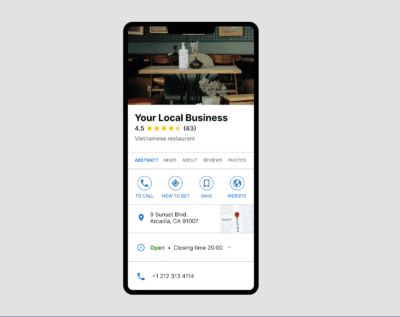
Since these are the factors that determine your ranking on SERPs, optimizing your business profile is a crucial tip you must integrate as a way of optimizing your local SEO. Some actions you can take for optimization include:
- Regularly upload videos and photos to boost ranking and promote engagement.
- Select specific attributes for your business, like Wi-Fi, outdoor seating, etc.
- Set detailed business hours, including opening times and days, holidays, etc.
- Respond to reviews authentically by including the specific location the customer is reviewing.
Creating and verifying your Google My Business page will not only make your business visible to potential customers but also possibly earn you a reward from search engines, such as the coveted sidebar space in Google’s local search. The benefits of including these tenets in your business profile do not end at optimizing your SEO. Rather, your customers and potential customers also get to have a positive experience when trying to find you and your business.
- Ensure NAP Consistency and Build Local Citations
NAP simply refers to the name, address, and phone number of your business. These should be consistent in the way they appear on business directories and your social media profiles. A good rule of thumb is to include NAP in the header or footer of the site. Avoid the common mistake of placing your NAP within an image because search engine crawlers will miss it hence you will miss a spot in the first three search results. Including NAP in the “Contact Us” will also work in your favor.
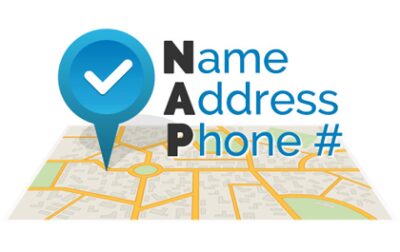
Concerning building local citations, it is all about ensuring the information about your business that is included in local directories on the internet has up-to-date information. Your NAP and a link to your website are essential elements of such information. Some of the best practices include:
- Submitting your NAP citations to big players like Facebook, Bing Places, Yelp, Google Maps, and Apple Maps.
- Submitting your information to popular directories in your industry and local area.
- Keeping all the citations of your business 100% consistent.
- Conduct Local Keyword Research
Keywords are an important ingredient when looking to optimize your website. Keywords are basically what users are looking for on the internet. Remember, the primary goal of optimizing your local SEO is to become more visible to users looking for your business. It is a form of marketing in itself. You first have to know what customers are looking for to determine if it is what your business is offering.
Conducting local keyword research will help you with this because it will give you an understanding of how people search for what you sell. When you integrate your findings into the content on your web pages, you will optimize your local SEO and become visible to more potential customers. Best keyword research ideas include finding keywords for subcategory pages and product pages.
- Encourage Reviews from Local Customers
To avoid falling prey to misleading advertising, customers conduct a lot of research when trying to find products and services online. Reviews are social proof that drives people to your business. One of the key things customers rely on is reviews. Therefore, to give your business credibility and increase conversions, you have to include a link that leads customers and potential customers to write and read reviews about your business.
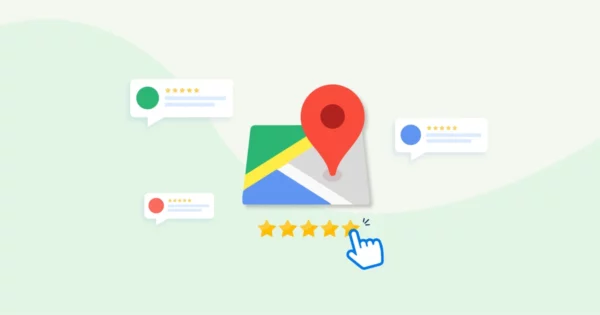
You can encourage your customers to leave reviews on Google, third-party review sites, social media, and your website. This will have a direct impact on your local SEO ranking. Your role should not end with providing platforms for customers to read and leave reviews. You should also respond to the reviews to show that you value your customers and the feedback they provide.
- Build and Improve Backlinks and Your Internal Linking Structure
For better local SEO, you need to ensure the links you include in the content you share are high quality. A good recommendation is to earn high-quality backlinks from local companies. When ranking local web pages, search engines look at the quality and number of backlinks in your content. However, it all starts with you creating high-quality and valuable content that reputable companies in your area can cite and include in their content as backlinks. You also have the option of reaching out to bloggers and industry leaders and asking them to link and share your content to improve your local SEO.
When it comes to building links, you should not only focus on external links. One of the benefits of including internal links in your content is that it will help you distribute page authority and ranking power among pages. Internal links also assist with website hierarchy and information architecture. Lastly, it helps support website navigation, which, in turn, improves user experience. All these outcomes are critical to the process of boosting local SEO.
- Conduct Competitor Analysis
What your competitors are doing can make or break your business. In the context of improving your local SEO, you can study what your competitors are doing and integrate your findings into your strategies. Semrush recommends its Organic Research Tool to help you find the keyword you might want to target. This is because the keywords your competitors are targeting have a high probability of being highly relevant to your business as well and, by extension, your local SEO.
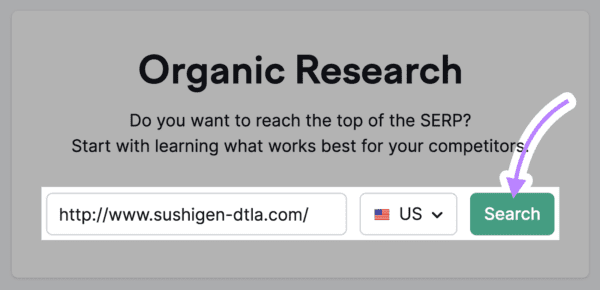
- Create Local Content
Content represents one of the leading ranking factors. However, how search engines use content to rank web pages depends on the nature of the content you generate and publish. Currently, search engines are even smarter and rank content created for users higher than those created for search engines. As a local business, therefore, you want to generate content for local users. You will be a local authority for your industry and attract a local audience, which will be good for your business. You should go beyond what your business sells when it comes to the topics you address in your content.
- Maintain an Active Social Media Presence
Your efforts to boost your local SEO is a form of digital marketing because you aim to improve organic traffic and achieve other metrics, such as generating leads and increasing sales. Social media is a key digital marketing strategy in this day and age. There are several ways social media can support your local SEO. It increases online brand awareness, organic traffic, and backlinks from local influencers.

Through social media, you will also have the chance to seek and respond to customer reviews, market to potential customers, and develop meaningful relationships with a high probability of leading to purchases. The types of content you may share on your social media pages include quizzes and interactive polls to increase local engagements, user-generated content from local customers, updates about community events you are sponsoring, industry updates and local news, and your local SEO content, such as blog posts.
- Optimize Your Website for Mobile Devices
According to Hubspot, 61% of all Google searches are on mobile devices. Hubspot also reports that searches involving the phrase “near me” have increased by 250% since 2017. Therefore, if you have a website that is unresponsive to mobile devices, you will be missing out on the opportunity to reach a wider audience and, thereby, a wider customer base. Making your website mobile-friendly will increase your local SEO and put you in front of many prospects and customers.
- Conduct a Local SEO Audit
When you have integrated all the tips described above, you might be tempted to take a break as you wait to see the result. However, boosting your local SEO is not a one-time thing. Rather, it is an intuitive ongoing process that requires you to make adjustments depending on your observations of how the website is performing. Conducting a local SEO audit will help you make objective observation.
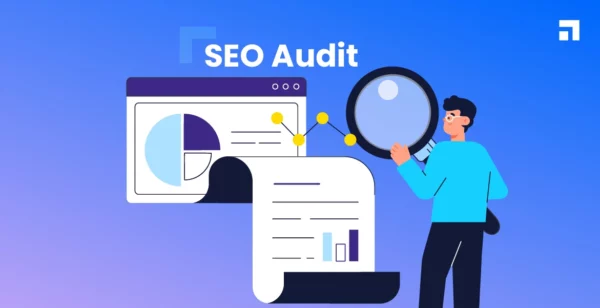
The main areas of your website to audit are on-page SEO, Google Search Console audit, Google My Business audit, competitor analysis, citation audit, and general website audit. By auditing all these components, you will have a comprehensive view of what is performing well and what needs adjustments. There are numerous local SEO audit tools you can rely on to perform this task and get the best results. Some include Ahrefs, Screaming Frog, Moz Local, Semrush, and Google Search Console, among others.
Summary
Local SEO is all about improving the visibility of your website for local customers. When you improve your local SEO, your ranking on the search engine results page will improve, which will help local users looking for your products or services online find you. This article has succinctly addressed the actions you should take to achieve the best results.

